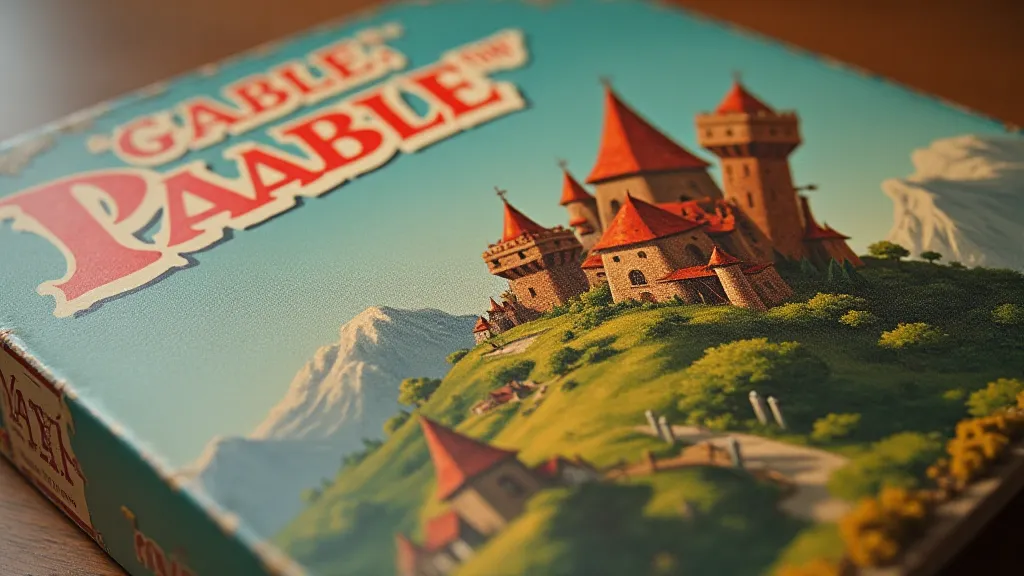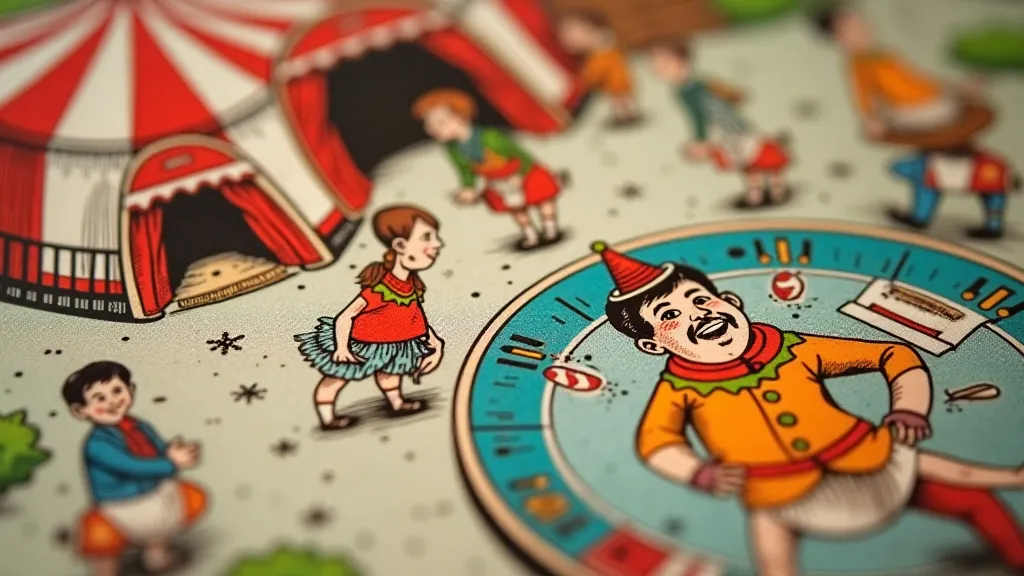The Silent Architects: Uncovering the Untold Stories of Board Game Illustrators
We, as tabletop gamers, celebrate the mechanics, the narratives, and the competitive thrill. We pore over rulebooks and debate optimal strategies. But how often do we truly consider the visual bedrock upon which these experiences are built? Rarely, perhaps, do we think of the illustrators – the silent architects who breathed life into the cardboard kingdoms and whimsical landscapes of vintage board games. Their contributions, often relegated to the periphery, deserve a spotlight, a moment of appreciation for the artistry and craftsmanship that shaped our childhoods and continues to enchant us.
It’s a strange feeling, holding a board game from the 1950s or 1960s. There's a tangible connection to the past, a sense of holding history in your hands. But beyond the well-worn cardboard and perhaps faded components, lies the artistry of the illustrators, individuals whose names are often lost to the sands of time. They weren't just creating pretty pictures; they were shaping the atmosphere, conveying the tone, and establishing the world in which we were about to play.
The Golden Age and its Visual Language
The mid-20th century was a unique period for board game illustration. Post-war optimism blended with a burgeoning consumer culture, creating a fertile ground for fantastical and aspirational imagery. Artists drew inspiration from pulp magazines, children's literature, and even early television. The prevailing style wasn’t about realism; it was about charm, vibrancy, and a touch of idealized wonder. Think of the illustrations for games like “Fireball XL-5,” or “The Game of Life” – bright, bold colors, dynamic poses, and a sense of boundless possibility. The illustration wasn’t merely decorative; it was an integral part of the game’s appeal, drawing players into a world of adventure and escapism. The choices made regarding color alone were critical. These decisions were far more than aesthetic—they helped convey a sense of wonder and nostalgia that defined a generation, as explored further in articles considering Chromatic Echoes: How Color Palettes Defined a Generation of Board Game Aesthetics.
Consider the work of Arthur R. Bell, a prolific illustrator whose hand graced numerous Parker Brothers games. His style, characterized by detailed character portraits and panoramic landscapes, embodied the era’s optimistic grandeur. Or look at the illustrations for “Clue,” where the stately mansion feels both intriguing and a little menacing, setting the stage for a thrilling mystery. These artists weren’t just drawing; they were storytelling, building narratives through visual cues.

Beyond the Brush: Context and Craftsmanship
The creation of these illustrations wasn’s a purely individual endeavor. It was a collaborative process involving game designers, art directors, and printers. Often, artists worked from detailed briefs and reference materials, adhering to specific design constraints. Lithography was the dominant printing technique, a complex process that involved transferring images onto printing plates using stone or metal. This meant that illustrations had to be prepared in a very specific format, often requiring a careful balance between artistic vision and technical limitations. The themes explored often reflected societal values and anxieties, as evidenced by the thoughtful consideration given to the narratives within even seemingly simple games—a perspective beautifully showcased in The Obsidian Mirror: Reflections of Society in Forgotten Board Game Themes.
What’s remarkable is the level of detail and artistry that could be achieved within these constraints. Artists painstakingly rendered textures, captured expressions, and created a sense of depth and perspective. Even seemingly simple illustrations involved hours of work and a deep understanding of both art and printing processes. There's a tactile quality to these vintage illustrations that’s often lost in modern digital art. You can almost feel the artist’s hand in the subtle variations of ink and color.
My grandfather collected board games. I remember, as a child, being captivated not just by the games themselves, but by the artwork. I’d spend hours tracing the lines of the illustrations, imagining the stories behind the characters. He’s since passed, but his collection remains, a tangible link to my childhood and a testament to the enduring appeal of these classic games. Flipping through those old boxes, I realized I knew nothing about the artists who brought those worlds to life.
The Fading Legacy and the Rise of Appreciation
Sadly, many of these illustrators remain largely unknown, their contributions overshadowed by the games they adorned. The focus shifted to designers and mechanics, and the artistry of the visuals became almost an afterthought. However, a quiet renaissance is underway. Collectors and enthusiasts are increasingly recognizing the value of these vintage illustrations, seeking them out as standalone pieces of art. Online forums and social media groups are dedicated to identifying artists and sharing information about their work. The sheer ingenuity employed in designing these games, from the rulebooks to the game pieces, sometimes feels akin to alchemy—a transformative process that blends creativity and nostalgia – a concept that resonates deeply with the explorations in The Alchemist's Crucible: Transmuting Nostalgia into Modern Game Design.
This renewed appreciation isn't just about nostalgia; it's about preserving a cultural heritage. These illustrations offer a window into a specific time and place, reflecting the values, aspirations, and anxieties of an era. They're more than just pretty pictures; they're historical documents, artistic testaments to a bygone age.

Collecting and Restoration: A Gentle Touch
For those interested in collecting vintage board game illustrations, a few words of caution are warranted. Many of these illustrations are fragile and require careful handling. Restoration can be a delicate process, and it's often best left to professionals. Attempting to clean or repair damaged illustrations can easily cause further harm. The details included in those illustrations often provide unique insights into the era's design sensibilities.
The value of these illustrations can vary greatly, depending on the artist, the game, and the condition of the artwork. Some are relatively common and can be found for reasonable prices, while others are rare and highly sought after. Researching the artist and the game is crucial before making a purchase. Understanding the context and creation of these artworks is key to appreciating their inherent value.
Even more rewarding than collecting, however, is simply taking the time to appreciate these illustrations for what they are: works of art, created by talented individuals who helped shape our childhoods and continue to inspire us today. The subtle shifts in color palettes, the carefully considered composition—these are testaments to a dedication to craft that’s often overlooked in our fast-paced digital world.

The Role of the Art Director and the Printer
It’s important to remember that the illustrator rarely worked in a vacuum. A skilled art director played a crucial role in guiding the artist, ensuring that the illustration aligned with the game’s overall aesthetic and marketing goals. The printer, too, was a vital partner, tasked with translating the artist’s vision into a tangible product. Lithography, the dominant printing technique of the era, presented unique challenges. The artist had to work within the limitations of the process, often making compromises to ensure that the final product was both visually appealing and commercially viable. This intricate collaborative process involved specialists who contributed to the final result—a complex system deserving of further examination.
Lost Voices and Rediscovery
The names of many of these illustrators have faded from memory, lost to the relentless march of time. However, thanks to the efforts of dedicated collectors and researchers, some of these lost voices are slowly being rediscovered. Online forums and social media groups have become invaluable resources for sharing information about these artists and their work. These online communities are breathing new life into the stories of these forgotten creative minds, giving them the recognition they deserve.
Looking Ahead: Remembering the Architects
It’s time we acknowledge and celebrate the silent architects of our tabletop experiences. Let’s remember the names—Arthur R. Bell, Harriet Lerner, and countless others—whose artistry brought these games to life. Their contributions deserve recognition, not just as charming relics of the past, but as vital pieces of our cultural heritage.





